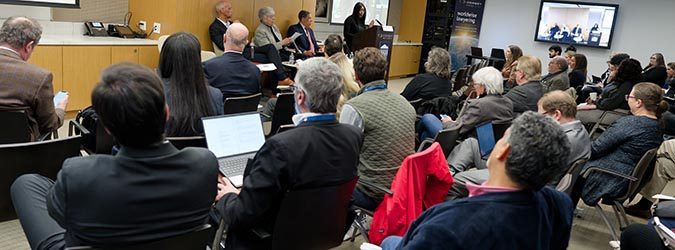Confused by the Drastically Changing College Sports Landscape? Just Follow the Money
1.19.2024

Envision being fired from a job where you walk away with a $78 million severance package that allows you to still get paid even if you find another job. Perhaps that is possible to comprehend for the CEO of an international conglomerate, but a college football coach?
Look no further than Jimbo Fisher, the former Texas A&M coach who was let go last November and is the beneficiary of the university’s generosity.
Meanwhile, Florida State University is suing the Atlantic Coast Conference, its current league, challenging an agreement that binds the school to the conference for the next 12 years with more than half a billion dollars in exit fees at stake. It’s only getting messier as the conference filed an amended complaint to the one it filed in December to prevent the school from participating in league affairs.
These are a few examples of the volatile landscape that is consuming intercollegiate athletics, according to a panel on the influence of money in college sports that was hosted by the Entertainment, Arts & Sports Law Section at Dorsey & Whitney as part of the New York State Bar Association’s 147th Annual Meeting.
Section Co-Chair Jill Pilgrim moderated the All-Star panel that included:
- Hal Biagas, chief operating officer and general counsel at Seven 1 Sports & Entertainment Group.
- Donna Lopiano, president and founder of Sports Management Resources, adjunct professor of sports management at Southern Connecticut State University, and president of The Drake Group.
- Peter Roby, former director of athletics and recreation at Northeastern University and member of the Knight Commission on Intercollegiate Athletics.
“Since the College Football Bowl playoff started in 2015, the severance package for fired coaches within public institutions of the Football Bowl Subdivision has tripled. It went from $32 million to $98 million of what we considered ‘dead money.’ That means schools are paying out coaches who were fired before their contracts were up,” said Roby. “Why do you think that is? Why do you think people started getting fired with years still left on their contract? It’s because now they are playing for a national championship where the money is that much bigger, and schools are less patient with coaches if they are not getting into the tournament.”
NCAA football generates approximately $400 million annually while the NCAA Division I men’s basketball championship, March Madness, generated $1.1 billion in 2022.
The NCAA uses men’s basketball tournament money to cover its operating expenses and to conduct 90 championships in 24 sports. However, 90% of it flows back to member institutions and conferences, which provides a big incentive to have successful teams. Revenue from the College Football Playoff is distributed directly to conferences and schools by a pre-determined formula.
The college sports model where free labor is standard has also contributed to the precipitous increase of revenue generation. Student-athletes were traditionally only eligible for scholarships that contained the monetary value equivalent to the cost of attending their institution. Personal expenses such as books and computers were not included.
They were finally allowed to earn money through endorsements, autographs and promotional appearances without risking their playing eligibility in 2021 with the advent of Name, Image, Likeness after the Supreme Court unanimously ruled in NCAA v. Alston that the NCAA could not limit education-related payments to student-athletes.
That ruling, however, has not impacted the bottom line for the NCAA or its members.
“NIL money comes from third parties where some business contracts with a student-athlete to use their name, image, likeness and it cost the school nothing. The schools are not paying anything out of pocket following this change to the NIL regulations,” said Biagis.
What remained, though, is that student-athletes are not allowed to receive compensation tied to performance and recruits are not supposed to sign a marketing deal dependent on where they decide to school.
The reality is very different. What has followed is chaos over the rise of “pay for play” schemes that are run through collectives, which typically are companies affiliated with school alumni. These collectives run as third parties and acquire financial resources that are directed to student-athletes for the right to use their NIL. Coincidentally, this form of compensation costs the institutions nothing.
However, this has created more questions than answers as 95% of NIL collectives are directed towards football and men’s basketball.
“This is all about men’s sports. It’s all about football, it’s about men’s basketball, and it’s about choices that were made by the foxes that were guarding the hen house. Title IX required institutions to give women equal publicity, equal promotion to develop women athletics in the same way that men athletics were developed. That has not been done,” said Lopiano. “Women coaches are making half the salaries of male coaches. If you don’t make an investment in women sports, if only 50% of all the coaches of women sports are women, and 95% of coaches in men’s sports are men, you can see who is making the money and the investment has only been made in football and men’s basketball with no sign of anything being done differently.”






